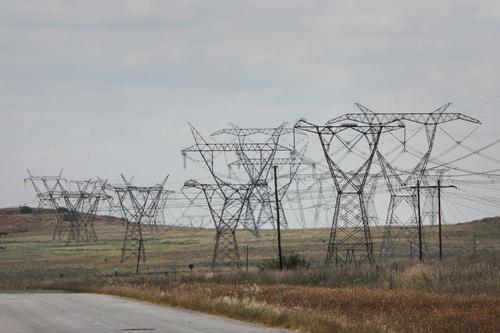Business
South Africa Braces for Winter Load Shedding as Electricity Supply Remains Constrained

As the country heads into winter, South Africa’s electricity supply remains under severe pressure, with experts warning of a high risk of renewed load shedding in the coming months.
The Minerals Council South Africa released its electricity update for February to March 2025, highlighting key challenges in maintaining a stable energy supply. According to economist André Lourens, the country’s Energy Availability Factor (EAF) stood at a concerning 57.5%, well below the levels needed to meet winter demand reliably.
From 7–10 March, a sudden drop of 2,700MW in generation capacity – due to failures at Koeberg Unit 2 (930MW) and two Kusile units – forced Eskom to lean heavily on Open Cycle Gas Turbines (OCGTs) to prevent widespread blackouts. Despite those efforts, South Africa experienced 55 hours of load shedding during March.
“The narrow margin between dispatchable generation and electricity demand underscored these challenges,” said Lourens. “Average demand in March was 22,509MW, while available generation sat slightly lower at 22,357MW.”
When emergency reserves were depleted, Eskom had no choice but to implement load shedding again on 19 March, after another five generating units went offline – two from Mozambique’s Cahora Bassa hydro system.
Downward EAF Trend Raises Concerns
Lourens warned that 2025’s EAF trend is now declining, mirroring the low levels seen in early 2024. This follows a short-lived improvement at the start of the year.
He pointed to February’s dramatic swings between minimum and maximum EAF levels – the widest gap seen since 2022 – as a sign of the system’s ongoing fragility.
Despite these setbacks, there was a modest 0.5% production increase in March compared to January 2024, according to Stats SA, suggesting incremental improvement – but far from enough to meet winter needs.
Expert Views: Repairs and Maintenance Key to Outlook
Professor Wikus van Niekerk, dean of engineering at Stellenbosch University, agreed that the Council’s assessment was accurate and stressed the importance of restoring Kusile Units 2 and 3 and Medupi Unit 4 to the grid.
“If those units are back by May, we may avoid the worst-case scenario,” he noted.
Meanwhile, energy expert Ruse Moleshe, managing director at RUBK, emphasized the tight balance between supply and demand.
“In situations like Eskom’s, where reserves are thin, load shedding always remains a risk,” said Moleshe. “That risk intensifies during winter, but the return of capacity from planned maintenance should help mitigate it.”
Eskom’s Position: Maintenance Now to Avoid Bigger Failures Later
Eskom has acknowledged the risk but said load shedding remained suspended as of early April. Still, the power system was described as “constrained” due to high levels of planned maintenance and above-average electricity demand caused by overcast weather.
The utility said that 7,034MW of capacity was undergoing planned maintenance aimed at boosting fleet reliability for winter and meeting regulatory requirements.
There’s been some progress: Eskom’s Unplanned Capacity Loss Factor (UCLF) improved to 28.67% in early April, down from 31.92% a year ago. However, the numbers still reflect a high rate of unplanned outages, signaling persistent instability.
A Fragile Outlook Ahead
With demand set to surge as temperatures drop, South Africa’s energy system remains precariously balanced. The hope now rests on maintenance schedules staying on track and critical units like Kusile and Medupi returning to service.
Until then, citizens and businesses alike must prepare for the looming possibility of load shedding this winter—a stark reminder of the urgent need to strengthen the country’s power generation infrastructure.
{Source IOL}
Follow Joburg ETC on Facebook, Twitter , TikTok and Instagram
For more News in Johannesburg, visit joburgetc.com





















